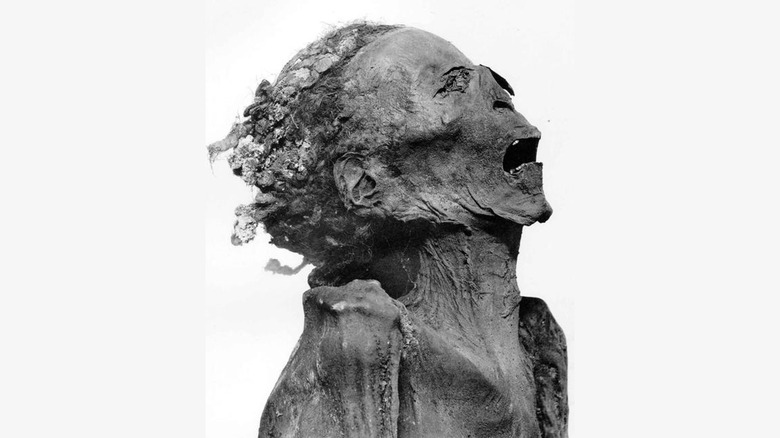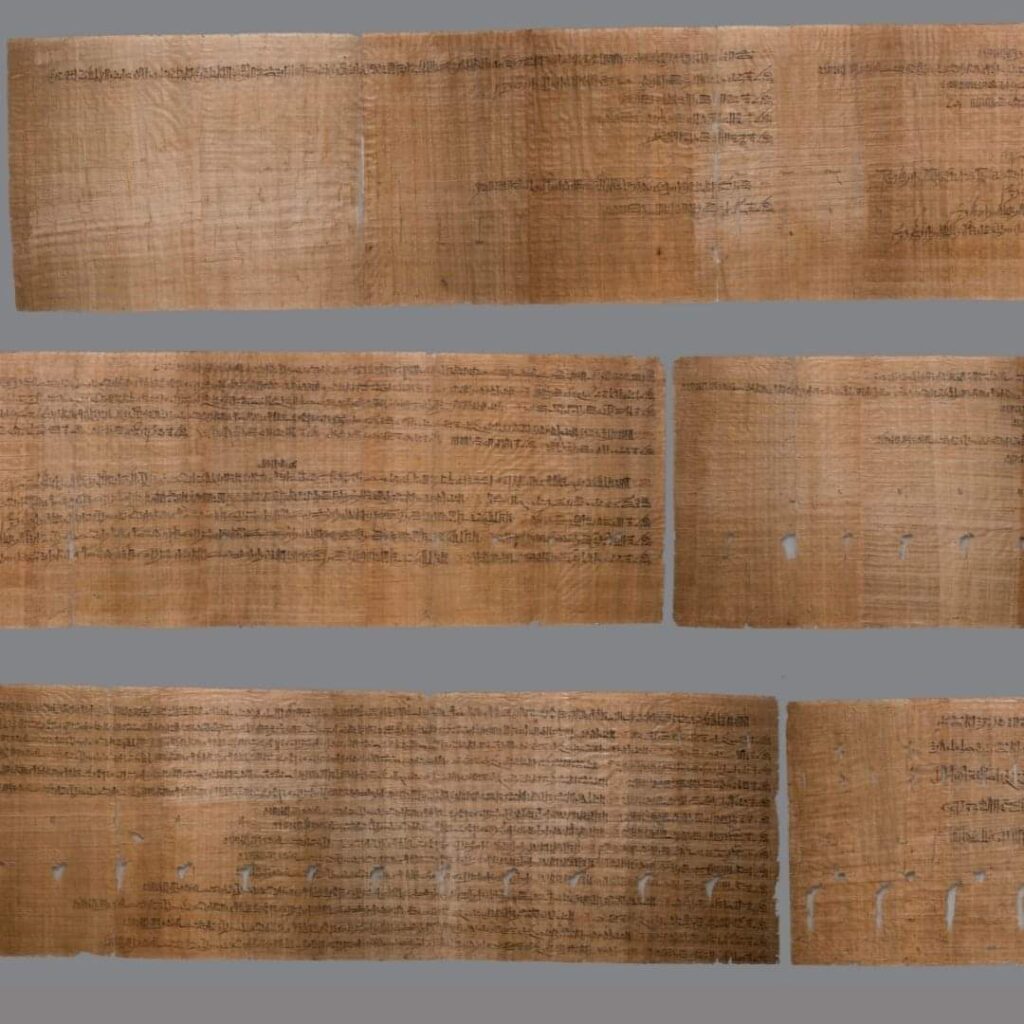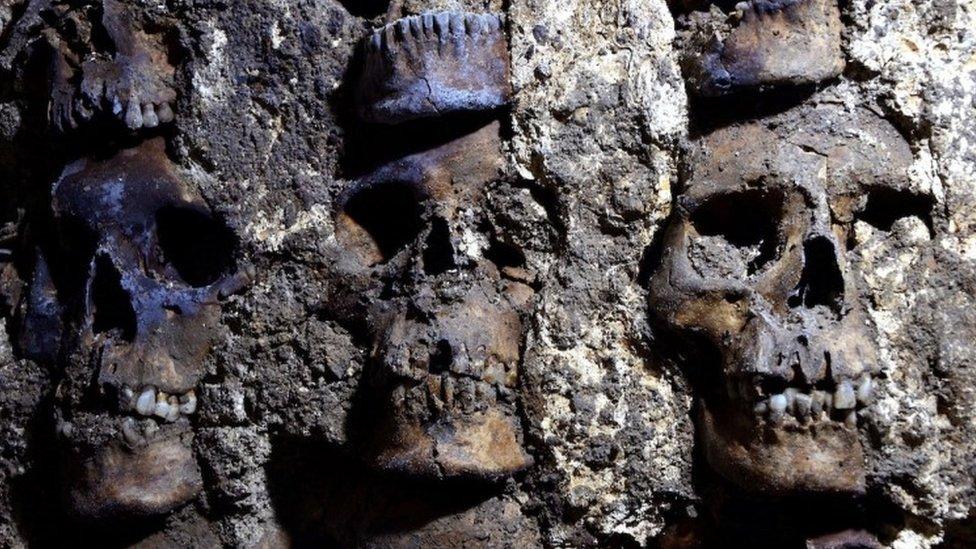
Deir el-Bahari, Thebes – 1881
They find him on a Wednesday. A screaming mummy.
Wrapped in sheepskin. Mouth wide open.
Screaming.
The archaeologists can’t look away. They can’t not look. Because this isn’t how mummies are supposed to look. This isn’t the peaceful sleep of eternity that the Egyptians spent thousands of years perfecting.
This is wrong.
The wrongness of it all makes everyone uncomfortable.
His jaw hangs loose. Unhinged. Like he died mid-scream, and someone froze him that way. Every tendon in his neck stands out like wire. His lips have pulled back from his teeth. His skin strains against bone.
He looks alive.
Not in a good way.
Something happened to him. Something terrible.
He died grasping. Pleading. Terrified, reaching out to tell us what happened.
But what happened?
The other mummies lie peacefully. Hands folded. Eyes closed. Ready for paradise. Each mummy enjoys a beautiful afterlife, a nice snooze.
Not this one.
This one fought.

What Makes Him Different
First, the sheepskin.
In ancient Egypt, sheepskin meant one thing: unclean. This man was damned. He was lower than an animal. The kind of wrapping you use for criminals, not kings. The kind that tells the gods to stay away.
Second, no gold. No amulets. No prayers were written on his wrappings to guide him safely to the afterlife. No one seemed to care if he went to the afterlife or stayed as he was. Which it seemed he did. In an eternal hell. What had he done to deserve this? Archaeologists gathered round, their antennas spiked. Their gut spooked.
Third, his hands and feet are bound. Tied tight with linen strips. Like he’s a prisoner. He was not treated like a typical mummy, a mummy that left life, loved and cared for. That was for sure.
Fourth, he has no name.
In ancient Egypt, your name is everything. It’s your ticket to eternity. Without it, you’re lost. Forgotten. Erased. You cannot even imagine going to the afterlife nameless. Who would even know you?
Someone wanted this man erased.
But they also wanted him remembered.
A mysterious paradox?
The Cache
The royal cache at Deir el-Bahari holds forty mummies. Kings and queens, carefully hidden by priests, were discovered when tomb robbers started ransacking the Valley of the Kings. Ramesses II is here. Seti I. Thutmose III.
These are the giants of Egyptian history.
And then there’s him.
A man amongst the greats, a solitary man with no name, wrapped in a wet sheep skin? This made no sense.
Unknown Man E.
That’s what the archaeologists call him. Just a letter. Not even a name.
He doesn’t belong here. Not with these kings. Not wrapped in sheepskin with his mouth frozen open and his face locked in agony.
But here he is anyway.
Shoved into a plain cedar coffin that someone had to hack wider just to fit his twisted body. No inscription. No decoration. Nothing to say who he was or why he mattered.
The other mummies lie straight. Arms crossed. Peaceful.
He’s curled.
Contorted.
Wrong.
Something is very, very wrong.

The Body Tells Stories
Modern CT scans reveal what the ancient embalmers tried to hide.
His organs are still inside him. All of them. Brain, heart, lungs, liver, kidneys. The embalmers didn’t remove anything. They just packed his mouth with resin and wrapped him up fast. This is the first cardinal sin.
This wasn’t a proper burial. This was a rush job. They wanted him done with.
But the scans show something else. Something that explains the scream.
Compressed skin around his neck. An inflated thorax. The unmistakable signs of asphyxiation.
Dr Sahar Saleem studies the images. She’s seen thousands of mummies. She knows what she’s looking at.
He died by hanging.
His face didn’t freeze that way during mummification. That expression—the open mouth, the strained neck, the terror—that’s cadaveric spasm. It happens when someone dies violently. The muscles lock instantly. They hold that position forever.
He died screaming.
Three thousand years later, he’s still screaming.
The Conspiracy

The Judicial Papyrus of Turin tells the story the Egyptians didn’t want to tell.
Year 32 of Ramesses III’s reign. A plot forms in the royal harem. One of the king’s secondary wives—Tiye—wants her son on the throne. Not the designated heir.
Her son.
His name is Pentawere.
Tiye gathers supporters. Officials. Military men. Members of the harem. They plan everything carefully. The assassination. The coup. The new king.
They fail.
Ramesses III dies—his mummy shows a slash across his throat that cuts to bone—but the conspiracy unravels. The trials begin. They’re brutal. Public. Designed to send a message.
In 2012, CT scans of Ramesses III’s mummy revealed a deep wound across his throat – approximately 7cm wide.
The cut was deep enough to sever the trachea, oesophagus, and major blood vessels. This was vicious.
It would have been immediately fatal, and this was the likely cause of death.
Some conspirators are burned alive. Others are mutilated. A few are allowed to take their own lives.
Pentawere is one of the few.
The papyrus states it plainly: “They found him guilty; they left him in his place; he took his own life.”
Translation: they gave him rope and locked the door.
Hang yourself, prince. Or we’ll do worse.
He chose the rope.
Imagine killing your own father to steal his glory. Was it his idea, or was it his mother, a mere wife, not a Great Royal Wife, just a wife with ambition? Perhaps they were two peas in a pod. Mother and son, or perhaps he was enmeshed with his mother, and did what he was told.
If so, one could almost feel sorry for him, but not quite; he had agreed after all to have his father’s throat slashed and not slashed daintily either. It was vicious. Seven centimetres wide is not a scrape by anyone’s standards.
What Happened Next
Someone finds him after he did what he was told to do. He hung himself, or worse would happen. His body twisted. His face was locked in that final moment of terror. The rope marks are still visible on his neck.
Frankly, they want to throw him away, dump him. They cannot give him a proper burial, not like a god-king. He was trash. So they make a compromise.
They wrap him in stinking sheepskin, marking him as unclean as possible. They don’t remove his organs, denying him proper preservation and respect. They pack his mouth with resin, sealing that scream forever. They put him in an unmarked coffin and erased his name forever. Or so they thought. They didn’t know there’d be clever scientists thousands of years later looking at him.
They mummify him, but grotesquely, humiliating him and proving to us today what he was. A traitor, a murderer, a conspirator still attached to his mother’s demands.
Because someone wants him to last. Wants his face preserved exactly as it is. Wants that scream to echo through eternity.
He’s not buried as a warning to the dead.
He’s buried as a warning to the living.
The DNA Evidence
In 2010, the clever people arrive, and the scientists extract DNA from Unknown Man E.
They compare it to the DNA of Ramesses III.
The results are definitive.
Father and son. Same Y-chromosome markers. Same paternal line.
The murdered king and his murderous son. Buried in the same cache. Sleeping together in the dark for three thousand years.
Ramesses III lies peacefully. Properly mummified. Name intact. Ready for paradise.
Pentawere lies screaming. Improperly mummified. Name erased. Damned.
The punishment worked.
Why It Matters
Museums are full of mummies. Thousands of them. Most look peaceful. Dignified. Ready for eternity.
But this one is different.
This one makes you uncomfortable. Makes you look away. Makes you wonder what he did to deserve this.
And that’s the point.
The ancient Egyptians wanted you to see him. Wanted you to know what happens when you betray a god-king. Wanted that lesson to last forever.
Three thousand years later, we’re still learning it.
His name was Pentawere. Son of Ramesses III. Prince of Egypt. Would-be king.
He conspired against his father. He failed. He died by hanging in a locked room, alone, terrified, knowing exactly what awaited him.
The Egyptians believed your afterlife began when someone spoke your name. But no one speaks his name. He’s not the son of a king; he is just Man E.
A catalogue number. A museum exhibit. A cautionary tale wrapped in sheepskin.
He wanted to be pharaoh. Wanted his name carved in stone. Wanted to be remembered forever.
He got his wish.
Just not the way he imagined.
Every day, tourists file past his display case in Cairo. They see that face. That scream. That eternal horror, shame and regret, hopefully.
They recoil. They whisper. They take photos.
They remember.
And somewhere in the darkness behind that twisted face, maybe his ka still comes home each night. Still finds that contorted body. Still remembers the rope tightening. The air disappearing. The moment everything went black.
Still screaming.
Forever.
The horror isn’t that we found him.
The horror is that we were meant to.
Want a deep dive into mummification and the mummy’s stories? Read here







